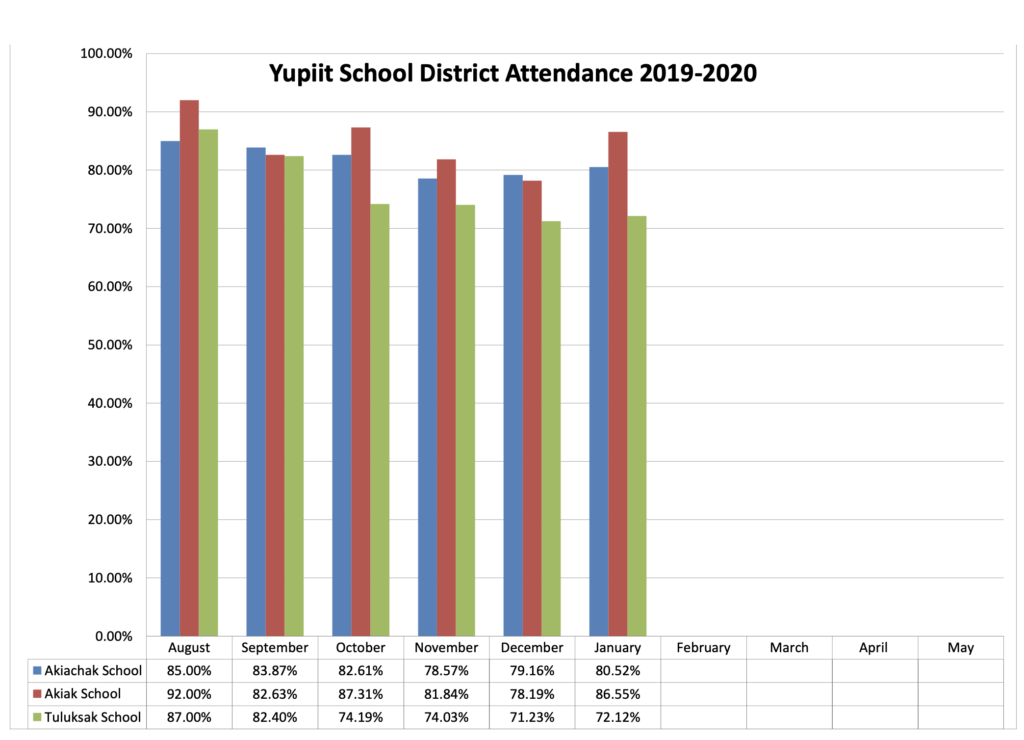You know, I have been taking it for granted that, when I say “Yupiit School District is the lowest performing school in the state” that folks have an idea what that means, but I’m learning that, even among our own staff, folks are shocked when they actually see the data.
So let’s look at some data.
I just put this table together of PEAKS scores (the Performance Evaluation of Alaska Schools). It is a standardized test that the state started administering in 2016. Let’s take a look at the last three years of testing. This data is for all three schools, and we’ll just look at ninth grade:

For those of you not in the education biz, “LA” stands for Language Arts. To summarize, 90% or more of the ninth graders tested in the Yupiit School District are “Far Below Proficient” in both Language Arts and Math. Compare this to the statewide data, where in 2018-2019, 34% of Alaska students score “Far Below Proficient” in Language Arts, and 22% are “Far Below Proficient” in Math.
Our District will graduate maybe 20 students this year. Consider that, when these students started kindergarten, they had around 40 classmates. Our District has a consistent 50% dropout rate. But the most difficult thing to stomach is this: those 20 students that we graduate will have, AT BEST, a 9th grade [Western] education. Yet, we will have done little to prepare them for life in their village, either. Instead of classes on managing money, cooking meals, raising kids, or fixing things that are broken, these kids will have been marched through literally tens of thousands of dollars or math and reading intervention programs.
Here’s another chart for you, this one on attendance. I’ll use this year’s data – it is consistent with past years.

The numbers will go steadily down as we approach the end of the year. High schoolers, especially, begin to disappear once we get into spring. Also, keep in mind that once a student misses 10 consecutive days of school, they are removed from the books. If we kept the drop-outs in this data, our numbers would be even lower.
The chart above is presented at every school board meeting, and inevitably there is a conversation about how we can get more kids to show up to school. My question to that is, given the quality of the education that these young people will receive, why should they bother going to school in the first place?